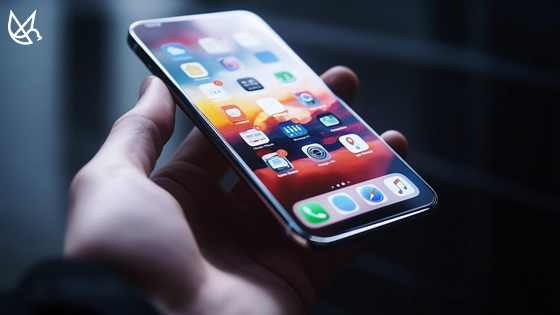Mobile applications are the digital pillars that support and boost communication, finance, commerce, healthcare, and content streaming in today’s world. Organizations, and even individuals, are now more vulnerable to cybersecurity risks and potential breaches due to the growing use of mobile applications across all sectors. Mobile application security faces extreme pressure from both cyber threats and tightening global regulations and must be given utmost priority.
Mobile app security has to upgrade from reacting post -attack to strategic foresight and early threat detection to safeguard our digital assets.
The future of mobile application security is being shaped by assessing the latest threats, regulatory changes, and upcoming trends and strategies.
The Evolution of Mobile Application Security
In the last ten years, mobile application security has advanced significantly. Earlier, basic measures such as static code reviews, simple encryption, and firewall protections were sufficient when applications operated in isolated environments. Mobile apps can now run on multiple devices and networks simultaneously with cloud integration. But this feature also makes older security methods ineffective.
Mobile app security is constantly evolving and now it relies on monitoring threats in real time. The most important pillars of modern mobile application security are DevSecOps, behavioral analytics, and runtime inspection. In this regard, DoveRunner offers real-time runtime protection and zero-code deployment. DoveRunner is also compliant with regulatory bodies such as GDPR, HIPAA, and RBI.
The future of mobile application security will be AI/ML-based threat detection, with mobile apps protecting themselves. Developing innovations like Passkey authentication and quantum-resistant encryption will secure data exchange and create a trustworthy mobile application ecosystem.
What Are the Most Critical Risks for Mobile Application Security in 2026?
The most critical risks for security of mobile applications are as follows:
1. AI-Assisted Malware:
Artificial Intelligence is used by cyber- attackers to find precise and minute flaws in mobile applications and networks. Not only this, Generative AI then creates and deploys custom made malwares to exploit these flaws.
2. Insecure APIs and Cloud Misconfigurations:
An application’s endpoint is where the data is exchanged between users and apps or services. When these endpoints are not properly secured with proper authentication hackers can break in and access your data and exploit them. Applications that use cloud services and open API are at most risk.
3. Weak Passwords and Session Management:
Mobile application users often undermine the importance of strong passwords. Users end up using weak passwords and the same password for multiple applications. This oversight and insufficient session management leads to data breaches and unauthorised account takeovers by attackers.
4. Unchecked Open Source Codes & Third-Party SDK:
Open source code and third-party tools that are used for developing mobile apps may contain malware. Using these implanted malware cybercriminals create backdoor entries and weaknesses in app security to exploit the app and its users.
5. Failure in Data Storage & Encryption:
Cyber attackers can breach data due to lapses in device storage security. Attackers can also decrypt confidential communication if proper data encryption is not done.
6. Reverse Engineering and Code Tampering:
Hackers take apart (or reverse-engineer) mobile apps to see how it is built and how it functions. Then they repackage the app by tampering code and adding malware like fake login screens. Users downloading this and running this app, unknowingly give access to hackers that exploit user data.
7. AI-Powered Phishing:
Attackers are now using deepfake voices and fake chatbots to impersonate users, app support agents or even authoritative figures. In this way they convince users and organizations to give OTPs, login credentials and reset passwords to take- over the app and exploit it.
8. Business Logic Abuse and Session Hijacking:
In some cases, cyber criminals use the legitimate features or processes of a mobile app in an unethical way without even hacking in the app. These security flaws lead to illegal activities such as bypassing payments or altering user privileges.
9. Broken Access Controls:
Privilege escalation and insecure object references remain among the most serious security breaches, allowing users to modify data they shouldn’t be able to.
10. Privacy and Compliance Violations:
Failure to comply mobile security regulations with global standards such as GDPR, HIPAA, and RBI may cause risks, such as financial loses to the users.
What is the Role of AI and Machine Learning in Application Security?
Security teams now employ Artificial Intelligence (AI) and Machine Learning (ML) to transform their mobile application protection methods. AI and ML systems monitor user behaviour patterns and mobile application runtime activities in real-time. The system detects abnormal system behaviour which indicates possible tampering attempts or unauthorized access or new security threats. The future of mobile application security will depend on ML models which will detect credential abuse and root-hiding framework patterns before they develop into major security breaches.
The AI-based protection system from DoveRunner provides real-time analytics and no-code deployment capabilities which enable secure protection for Android and iOS applications. AI and ML technology enables large-scale cybersecurity protection through automated threat identification and faster incident response and improved risk evaluation through ongoing system learning. The growing complexity of mobile ecosystems requires organizations to implement AI and ML systems for developing security frameworks that will protect mobile applications from advanced threats.
What Is DAST (Dynamic Application Security Testing), and Why Does It Matter for Future Application Security?
DAST stands for Dynamic Application Security Testing. It is a real- time process to point out prospective security liabilities in mobile applications, from the perspective of an attacker. DAST simulates live attacks situations like insecure APIs, weak authentication, or poor session handling and then assesses mobile application performs under these conditions.
As the future of mobile application security, DAST plays a vital role by assisting developers to move from reactive measures to real-time defence. Integrating DAST into development pipelines allows early vulnerability detection, reduces exposure, and speeds up remediation before deployment.
In essence, DoveRunner’s unified use of SAST and DAST for vulnerability detection, combined with RASP’s autonomous in-app protection, delivers a layered and continuous security framework for both Android and iOS environments.
What Are the Key Cloud-Native and Mobile Security Trends?
Cloud-native architectures refer to developing and running mobile applications that operate with all cloud features. Unlike traditional mobile app development, cloud native architecture breaks mobile applications into smaller parts that can work and update independently from each other. It will transform the future of mobile application security as it is faster, cheaper, more flexible and easy to maintain and supervise.
The growing smartphone ecosystem requires developers to implement secure APIs together with token-based authentication and Zero Trust frameworks which protect user information while minimizing security risks. Developers now use Software Bill of Materials (SBOM) to identify and resolve security vulnerabilities during the early stages of development.
Continuous authentication and rigorous real-time threat analytics are the most crucial for effective mobile application security. The combination of these technological developments creates mobile applications which adapt to changes while maintaining resilience and following new security standards for digital trust.
Regulatory and Compliance Changes Impacting Mobile App Security
The future of mobile application security is being redefined as governments and global regulators strengthen data privacy and protection laws. International Laws such as GDPR and HIPAA and global regulations such as PCI-DSS have given strict framework to mobile app developers to plant strong encryption, transparency of consent, and compliance auditing into the design of every mobile application.
The Digital Personal Data Protection (DPDP) Act of 2023 in India and the EU Cyber Resilience Act are two new laws that require supply chain monitoring and transparency through consent. These frameworks help ensure that app data is protected responsibly and securely across different countries and regions.
In today’s digital age, mobile tech firms have to make sure that data is shared safely, that all mobile application processes comply to security laws and regulations ,and everything is supervised and reported in real-time. Real-time monitoring and advanced encryption should be prioritized to safeguard data and users’ trust across distributed networks.
DoveRunner supports these compliance goals through enterprise-grade encryption, runtime protection, and zero-code integration across Android and iOS. Its architecture aligns with standards like RBI, GDPR, HIPAA, and SEBI, enabling organisations to maintain compliance while ensuring seamless performance.
Mobile Application Security in 2026: Best Practices to Future-Proof Your Mobile Applications
Mobile application security will adopt adaptive defense strategies which implement strategic protection instead of waiting for attacks to occur. The development process of mobile applications needs to begin with shift-left security approaches which detect vulnerabilities before deployment. User data protection and unauthorized access prevention will continue to depend on token-based authentication and secure APIs and strong encryption methods.
Real-time anomaly detection through continuous monitoring and automated vulnerability testing and behavioural analytics will minimize the time organizations need to respond to new security threats.
In case of user-centric security measures biometric authentication, two-factor verification and permission management systems are must-have features to help build user trust while providing resilient mobile application ecosystem and experiences. Organizations need to maintain compliance and resilience because cloud-native architectures and Zero Trust frameworks will become industry standards.
DoveRunner supports this approach through zero-code integration and runtime self-protection and hybrid cloud or on-premise deployment which enables organizations to secure mobile applications intelligently while maintaining scalability and compliance and delivering consistent performance in digital ecosystems.
Why Mobile Application Security Matters Across the Software Development Lifecycle?
Mobile application security is essential at every stage of the Software Development Lifecycle (SDLC). Security measures should begin at the design stage to help developers detect and fix problems before their applications become ready for deployment. The entire development process of mobile applications stays secure through automated scanning and continuous validation from coding to app testing.
The deployment phase requires runtime protection and live threat detection to prevent data breaches and tampering incidents. Maintenance activities for app protection involve scheduled updates and threat monitoring and incident response capabilities.
DoveRunner supports this mobile application security model through RASP, zero-code deployment, and compatibility with both Android and iOS. Mobile application security solutions provided by DoveRunner fits seamlessly into development workflows and ensures data encryption, compliance with various regulatory bodies, and active monitoring at every step.
Emerging Tools & Technologies Shaping the Future of Mobile Application Security
The future of mobile app security is moving toward protection that is adaptive, smart, and code-free. The development of mobile technology has shifted from basic repair methods to advanced predictive security systems because cyber threats including root-hiding and tampering and credential theft have evolved into sophisticated attacks.
The implementation of Runtime Application Self-Protection (RASP) security frameworks has transformed application protection through built-in application resilience which allows real-time detection and blocking of code injection and debugging activities.
Artificial Intelligence and predictive analytics are playing a crucial role in this evolution by identifying vulnerabilities before cyber attackers can exploit them. No-code and low-code integration platforms simplify security adoption, allowing developers to embed protection without altering source code. DoveRunner exemplifies this approach with zero-code integration, runtime protection, and hybrid deployment options that comply with RBI, GDPR, HIPAA, and SEBI standards.
New age mobile application security systems provide advanced encryption protocols like AES-256 and real-time analytics dashboards. These features provide visibility into attack trends and improve decision-making of the app security. The future of mobile application security will increasingly rely on AI-assisted systems that will self-learn and adapt. It will create more robust apps that will safeguard user data and build lasting trust.
FAQs
Q1. Why is Mobile Application Security Evolving Rapidly?
Mobile application security is evolving rapidly to overtake increasing AI-powered cyber threats, cloud- integration and to meet worldwide regulatory requirements.
Q2. What Are the Differences Between Current and Future Mobile Application Security Approaches?
The difference between present security system and future mobile application security is that the present security depends on ineffective mechanisms like firewalls and manual review processes while the future of mobile application security will depend on automated systems, AI-powered threat identification, runtime protection and DevSecOps integration. Current mobile application security systems are reactive while future of mobile application security is proactive.
Q3. Which Industries Are Adopting Next-Gen Mobile Application Security?
All business sectors including banking and fintech, content streaming and healthcare organizations now implement advanced mobile security systems to protect user information and stop piracy.
Q4. What Are the Best Practices for Mobile Application Security?
Cloud-Native applications Zero Trust architecture, RASP, scheduled vulnerability assessments and active threat monitoring are the best practices for mobile application security complete data protection and system reliability.
Q5. How Can Future Mobile Application Security Meet GDPR, HIPAA, and PCI-DSS Compliance?
The combination of certificate-based encryption with policy-driven license management and automated auditing based on GDPR and HIPAA and PCI-DSS frameworks maintains ongoing regulatory compliance throughout mobile ecosystems.
Q6. What Are the Top Tools and Technologies Supporting DAST in Modern App Security?
The current application security market relies on OWASP ZAP and Burp Suite and Acunetix and Netsparker as its leading tools for DAST testing.



